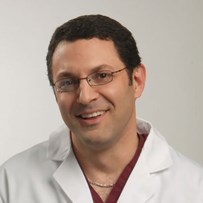
BY: DR. TODD C. BATTAGLIA, MD, MS
After a long winter, warmer days are finally here again. Many of us are itching to get outside and get a taste of spring by teeing up for a round of golf or jogging a few miles. But you can't go straight from zero to sixty – don't be so eager and excited that you overdo it. While you can't make drastic changes in just a few weeks, it is possible to get back on the workout track in time to enjoy the warmer weather ahead. You need to prepare your body for your exercise program – especially if you used the cold weather as an excuse to become a couch potato.
The key is to take it slow. Don't try to run 10 miles on the first day. And if you've been less active for a while, first see your doctor before you start any new exercise program. Once your doctor gives you the green light, start with a slow exercise program, such as a walking regimen. Begin by walking 10-15 minutes a day, then gradually increase by 5-10 minutes each week until you can go for 30-40 minutes. Also include a proper stretching program. This may seem like a very slow progression, but this strategy will provide endurance and flexibility that will enable you to move into more strenuous activities, like jogging, golf, and tennis.
Once you feel ready to move to more advanced activities, continue to use a gradual and common-sense approach. “Too much, too soon” will quickly lead to overuse injuries that may linger all summer. For instance, joggers should remember the “10% rule” - increase mileage or speed by no more than 10% per week. If you are a golfer, start practicing at the driving range with slow and easy swings, and work up to a faster swing. Golfers should also include weight training and stretching into their exercise program, especially targeting the lower back, trunk, and arms.
Upper body exercises are also particularly useful for tennis players, who should work on stretching and strengthening the shoulders and arms, and prepare their bodies for the stop-and-go pivoting and sprinting actions of tennis. For weight lifting and other resistance exercises, strive for a level that allows you to do 12-15 repetitions with some effort, but without struggling to complete the set. Once you are able to do more than 15 repetitions with minimal strain, then it's time to increase the weight by 5-10%.
Spring is also a great time to inspect your home equipment and exercise gear and make sure it's safe, clean, and in good working order. Check resistance bands and exercise balls for tears or holes. If you find anything suspicious, get rid of it and get a new one. Most running shoes will last between 300 and 500 miles, whereas minimalist shoes and racing flats, because they have less material underfoot and are generally less durable, will typically last 200-400 miles.
This all sounds like a lot of work before you even start the summer sports season. But without the right exercise program and plenty of preparation, you're at risk for injury. As people start or return to an exercise program, the most common injury to occur is simple muscle soreness. If you do overdo it, start treatment with RICE – Rest, Ice, Compression (with an elastic bandage), and Elevation. This will usually help lessen the damage and healing time. In more severe cases, a doctor should evaluate your injury and establish a plan for treatment and return to exercise. Particularly, if muscle or joint pain lingers on for more than 10-14 days or is getting progressively worse, then you should consult a physician.
Finally, realize that there is a lesson here. After you prepare your body for spring sports, then spend the warm-weather months active and healthy, don't let it all go to waste next winter. Stay active during the cold months, so that you are ready for next spring and don't have to start your exercise program all over again. It is better to exercise on a regular basis year-round. So even if you don't want to go outside over the winter, keep up on your stretching program, use a stationary bike or home weights, or join a health club or pool. Then next spring, that exercise program will be second nature.
